
by John P. Pratt
22 Feb 2018, 1 LWi (E), 1 LAu (UE)
©2018 by John P. Pratt. All rights Reserved.
| 1. Marriages |
| 1.1 Jacob |
| 1.2 Isaac |
| 1.3 Abraham |
| 2. Covenants with God |
| 2.1 Abraham |
| 2.2 Jacob |
| 2.3 Isaac & Rebekah |
| 3. Other Examples |
| 3.1 Moses |
| 3.2 Jesus Christ |
| 3.3 Latter-days |
| 4. Conclusion |
Until now, only three covenant dates of Abraham, Isaac or Jacob had been published in my work because the pattern for such hadn't been known. The three were the date of Abraham's covenant with the Lord about his posterity and the marriage dates of Jacob to Leah and Rachel. Recent research inspired by my Sacred Calendar Tutorial has led to the discovery of many new dates in their lives which are presented in this paper. The Enoch Calendar appears to play the principal role in determining the pattern of those dates.
The marriage date of Jacob to his two wives Leah and Rachel has been published in my work because the unusual circumstance of them being only a week apart helped identify them. When only one date of a set is known, no pattern emerges until two or three witnesses make the pattern clear. Recent research has led to the discovery of the marriage dates of Abraham and Isaac also, leading to the pattern for all three being more apparent. Also it was noticed that there had been a one week error in the formerly published wedding dates of Jacob to Leah and Rachel. Let us now look at each of those.1. Marriages
 |
That triple calendar spanning of the week of those two marriages testified of the correctness of those dates. It also gave a clue to what pattern might be employed.
There was another huge feature of the wedding dates. They occurred in a holy year on the Enoch Calendar. Every Enoch year is named for one of the days in its 364-day year. That is, there are Great Years of 364 years each. The names of some of those years correspond to holy days, so some of the years are considered holy years. In this case, the marriage of Leah was on the day 14 Spring which is the first day of Passover. It turns out that the name of the Enoch year was also 14 SPRING, which was a PASSOVER year! Capital letters indicate the name is of an entire year.
Jacob's wives gave birth to twelve children in the first seven years of his marriages. Thus, all of those children were born during the holy week of PASSOVER. Joseph was the last of those, born in the holy year of END PASSOVER (the first and last years are the more holy).
This amazing calender alignment of the marriages spanning the holy Passover week and the births spanning the holy PASSOVER week of years was strong enough testimony to publish the two dates.
Both of those dates were also holy on other calendars, so it did not make the pattern clear at that time whether or not the Enoch Calendar was also involved with the marriages of Isaac and Rebekah or of Abraham and Sarah. So those dates remained undiscovered.
In reopening the search for Isaac's marriage date to Rebekah, two things were noticed. First, the Bible tells us that Isaac was forty when he married Rebekah (Gen. 25:20). It does not give the ages of Abraham or Jacob at the time of their marriages. That Isaac was "forty" could either mean that the marriage occurred on his fortieth birthday or that he was within half a Hebrew year of his fortieth birthday.
Checking his actual fortieth birthday on 10 Nisan (PH) led to a day which was sacred on many calendars, including the Enoch Calendar. But it was also noticed that that year was also a major holy year on the Enoch Calendar! That is very rare as there are only twelve such years every 364 years. Thus, the proposed marriage date is Sat 26 Mar 1912 BC, being 10 Nisan (PH) and 0 Spring 1 WINTER (E). The day 0 Spr (E) is the spring equinox on the Enoch Calendar and 1 WINTER is the year for the first day of winter after the year 0 WINTER for the winter solstice. Again, these names for years do not refer to anything happening in the skies, but are only a naming convention for years which the Lord seems to be using.
While this date seemed promising, it was not considered worth publishing unless a proposed date for the marriage of Abraham would also be found which followed a similar pattern to Isaac and Jacob.
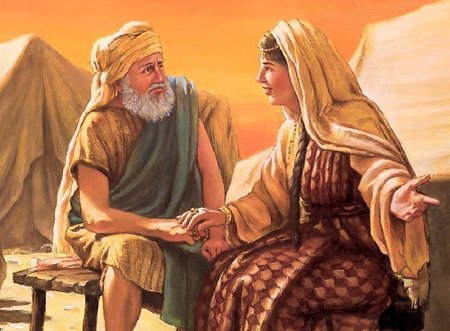 |
If Abraham were still age forty nine at his marriage, then it turns out that that year was also a holy year on the Enoch Calendar. It was the holy year TRUMPETS (1 AUTUMN), which occurs exactly 91 years before the proposed year of Isaac's marriage in 1 WINTER (one quarter of 364 is 91). If Abraham was married at age 49 and Isaac was born when he was 100, then he had been married 51 years at Isaac's birth. And if Isaac was married at age 40 then his marriage was 91 years after Abraham's! Thus, a rare pattern of holy years on the Enoch Calendar emerges.
Looking in that holy year, there is a perfect candidate for the marriage date of Abraham to Sarah: Sat 4 Apr 2002 BC. That day was Passover (14 Spring) on the Enoch Calendar, and also Passover (15 Nisan) on the Perpetual Hebrew Calendar. Moreover it was also End Passover (21 Spring) on the Uniform Enoch Calendar!
It is important to remember one of the uses of the uniform versions of the calendars. If there is a date which has symbolism of a calendar date but falls at the wrong time of year, then the uniform version of the calendar can be used, on which a holy day can fall anytime during the year. In this case, it appears that the marriage date could have symbolism both of Passover (which it does on the Enoch Calendar) and also of End Passover (on Uniform Enoch Calendar). That could be foreshadowing that Leah's wedding would be on Passover (E) but Rachel's would be on End Passover (E). Thus, Abraham and Sarah's wedding date would tie to both Leah and Rachel's.
 |
All of the key elements of this pattern for all four marriages is summarized in Table 1.
The same process was applied to one clearly known date of the covenant of God with Abraham to be the chosen seed, with the token of the covenant being circumcision. When dates for similar encounters of Isaac and Jacob with God to continue that covenant were then also sought and discovered, they were found to follow the same pattern.
In all cases the pattern involved holy days on the Enoch Calendar. In several cases the event also occurred in a holy year. Then verification was sought in already established and published dates from the life of Moses, Jesus Christ, and Joseph Smith. In every case the same pattern was already there but had not been hitherto noticed. Thus, the Enoch Calendar has been found to be essential in the selection of dates for several holy events.
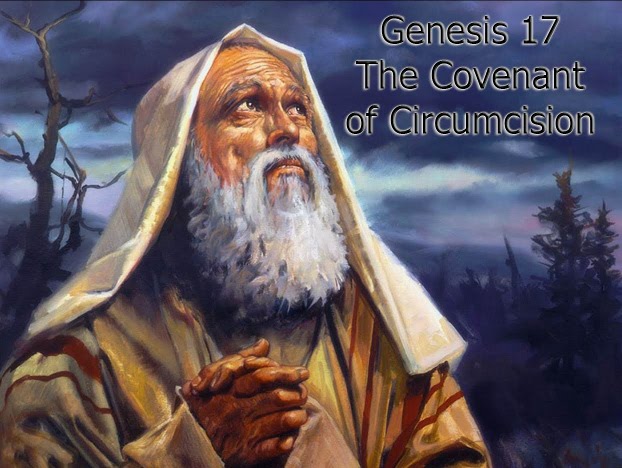 |
The covenant between God and Abraham was on the holy day Consecration (10 Nisan), which was the day when the lamb was chosen to be sacrificed on 14 Nisan for the Passover in the law of Moses (Exo. 12:3). That is a very symbolic date for the birth of Isaac who would indeed find himself in the place of the sacrificial lamb. But the date was also on the holy day of the Spring Equinox (0 Spr) on the Enoch Calendar. Perhaps that was important for that date to have been chosen for the covenant.
Now the question arose whether or not the dates where that family covenant was renewed with Isaac and Jacob could be determined from information in the Book of Jasher and whether or not those dates would follow any sort of pattern. In particular, it was decided to research whether one criterion for the covenant date was to be an Enoch Calendar holy day.
Another possibility is the importance of the day on the Priest Calendar. The day of the covenant with Abraham was "1 Father" on the Priest Calendar and the covenant was all about him becoming "Father Abraham"!
The first date sought was that of Jacob because Genesis makes it clear that Jacob's covenant with God at Bethel, where his name was officially changed to Israel, occurred after the death of Rebekah and just shortly before Rachel's death as she gave birth to Benjamin just outside of Bethlehem. Hours had been spent looking for that date previously but to no avail, perhaps because I had been emphasizing the need for it to have occurred on a holy day on the Sacred Round. Since that time it has become clear the birth and death dates of these great prophets and their wives are nearly always on holy days on both the Sacred Round and the Hebrew Calendar, but dates of other events are scheduled on other calendars.
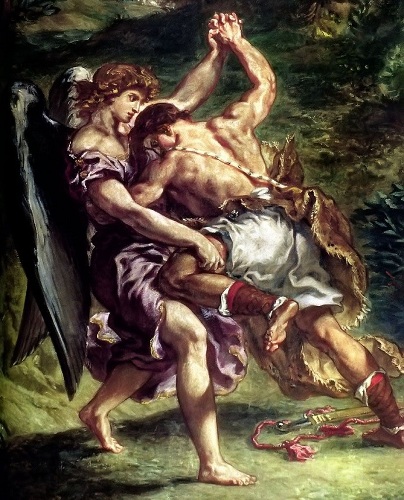 |
Another date of interest was when Jacob was on his way going to his uncle Laban's. He had a very important dream about angels ascending and descending a ladder to heaven. The proposed date for that vision is Sat 25 Mar 1815 BC, 1 Nisan (PH), Spring Equinox (0 Spring, E). On that day he erected an altar and consecrated it with oil, naming the place Bethel (House of God) because God was there. He had the dream in the early morning but the altar would have been consecrated in the afternoon after the priest day of 1 Father (1 Abijah P) had begun. That altar is where he returned to into order to covenant with God many years later.
That was just 15 days before he began working for seven years with Laban in order to marry his daughter Rachel. That starting day, Sun 9 Apr 1815 BC, was Easter (PH, E), Passover (J) which is the day after End Transplanting (J), Begin Nourishing (UJ), 1 Dwelt (Shecaniah P), and 13 Deer (SR). All of those references to being transplanted and passing over to a new dwelling to be nourished testify of the correctness of these dates.
Another date that was found was the date of Jacob wrestling the angel at the time of his passing over the Jabbok River by fording it on his way back home to Canaan from Laban's in Syria. The Jabbok (modern Zarqa) is the second largest tributary of the lower Jordan River. That angel told him his new name would be Israel, but apparently the official name change came later with the covenant. This event happened just after the end of Jacob staying twenty years with Laban as he was just returning to his home country. A very strong candidate date was found and it matches the pattern so far: Sat 12 Apr 1795 BC was a month after the twenty years had expired. It was New Year's Day (1 Nisan PH), End Passover (E), End Transplanting (J), and 1 Jaguar (SR), as well as six other holy days. What makes this date a bull's-eye is that this happened as Jacob was just finishing being transplanted back to his home by passing over the Jabbok River (Gen. 32:22). There are two witnesses in sacred calendars of that event which leaves no doubt as to the correctness of the date! And as a bonus, it occurred on 1 Jaguar, his mother Rebekah's birth date!
Now let us see if the covenant date for Isaac can be found and whether or it not it is similar to the proposed dates for Abraham and Jacob.
Genesis speaks of one appearance of the Lord to Isaac sometime after the death of Abraham when there was a famine. Isaac was about to go to Egypt when the Lord appeared to him and told him to go to Gerar and promised to make the covenant with him (Gen. 26:2-4). The Book of Jasher gives the time as very soon after the death of Abraham. It also mentions a second time that the Lord appeared to him and fulfilled that promise to establish the covenant. It says it was three years after the first and when he was leaving Gerar to go back home.
At this point it was noticed that Abraham's death date had never been found, so that search was done. Fortunately, this time a date was found that is so good that there is no doubt of it being correct: Thu 18 May 1877 BC pm* was 1 Resurrection (V) and 1 Birth (M), both the same as at the birth of Isaac! That is important because there is nearly always a father-son calendar alignment on birth and death dates where they are the same on some sacred calendar. Moreover, it was 1 Sivan (PH) and Isaac was born on 1 Sivan (UH). Remembering that the uniform version of the calendars is just for that purpose of alignments at different times of the year, that makes three sacred calendars on which Abraham's death date matches his chosen son Isaac. It was also the holy day 6 Jehezekel (P), the day on which Jesus was crucified. And finally it was 1 Light (SR), the first day of the Sacred Round cycle. It may also be worthy of note that Leah died on 1 Light (SR) and Rachel died on 1 Sivan (PH). Thus, with all of these alignments, there is no doubt as to the validity of this date. (As for the expected husband-wife link, in this case it was Sarah who died on Abraham's birth date of 10 Tishri.)
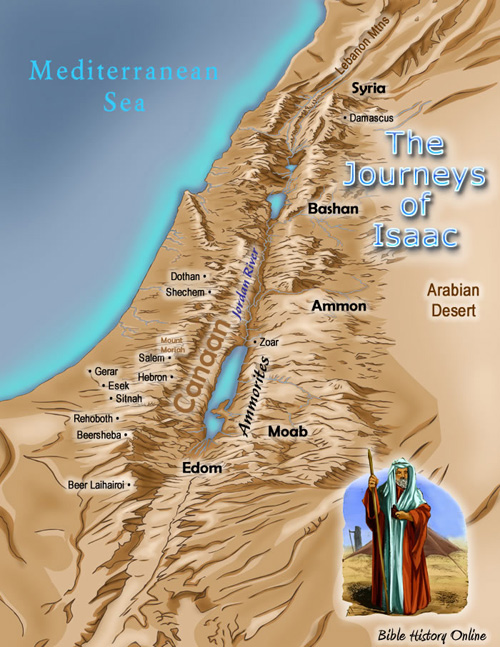 |
The date of the establishment of the covenant was also easy to find three years later: Sat 20 Sep 1874 BC was the Day of Atonement (PH), the holiest day of the Hebrew year and the day on which to be reconciled to God. The day of Abraham's covenant was on the spring counterpart of that day, Consecration, which was Isaac's birthday. So that day is a match. Moreover, as an extra witness, it was also Atonement on the Jubilee Calendar.
The day was also the Autumn Equinox (0 Autumn) on the Enoch Calendar and the covenant with Abraham was on its spring counterpart 0 Spring, so that is a match. And we are open to the possibility that it is this alignment on the Enoch Calendar that might have been the highest priority to establish the candidacy of a covenant day.
So what about the Priest Calendar? It turns out the day was 1 Consecration (1 Harim P) which is a perfect match for Isaac, who had earlier become the sacrificial lamb. That is a match with Abraham having his covenant day on 1 Father (P), where he would become Father Abraham.
Thus, we see that all four of these covenant dates have in common being on holy days on the Hebrew, Enoch and Priest Calendars.
Another date of interest that might fit the pattern might be when the Lord answered Rebekah's prayer about just what was causing all of the pain in her womb. The scripture says that "the Lord said unto her" that she had two whole nations fighting in there (Gen. 25:23)! There are not many examples of a direct revelation to a woman in Genesis, so this seemed worth checking out. The Book of Jasher gives the month this happened, namely the seventh month or her pregnancy (Jasher 26:9).
Sure enough, a perfect date was found and it matches the pattern. Two months before the birth of her twins Jacob and Esau, the day Sat 26 Jan 1892 BC was 13 Dog (SR), which represents the day of greatest suffering, Summer Solstice (0 Summer) on the Uniform Enoch Calendar, 0 Quickening (V), the holiest time on the Venus Calendar, and holy on six other sacred calendars. This time it is not holy on the Enoch Calendar, but on the Uniform Enoch Calendar which is used as a back up as has been described.
Finally, another date of interest is when Rebekah had Jacob pretend to be Esau when Isaac wanted to bless Esau and was old and couldn't see well enough to tell the difference. The Book of Jasher tells us that was when Isaac was 123 and Jacob was 63. The date proposed here for that event is Sun 12 Apr 1829 BC, being Passover (15 Nisan PH), Easter (E), Passover (J), and 1 Kislev (UH). It is this last date being Rebekah's birth date (PH) which is the strong witness that this date is correct. There was a similar witness of the date of wrestling with the angel on her birth date.
Now let us look at other covenant days with the Lord or other appearances of the Lord to see if they also use a similar pattern.
 |
One example from the life of Moses is the day of his transfiguration, after which his countenance shone so brightly that his head was covered. The day proposed in my work for that event is Sat 3 Oct 1462 BC. That day was not only Tabernacles (15 Tishri) on the Hebrew Calendar, it was also Tabernacles (14 Autumn) on the Enoch Calendar! Moreover, it was End Tabernacles on the Jubilee Calendar. It was 1 Rewarded (1 Gamul) on the Priest Calendar so that also seems to fit.
The only other date listed in my Religious Chronology for Moses which somewhat implied interaction with the Lord was the day of the Brazen Serpent. It did not fall on a holy day on the Hebrew Calendar, which really surprised me at the time, but it did fall on the Autumn Equinox on the Enoch Calendar and on Atonement on the Jubilee Calendar, and in fact in an ATONEMENT year on that calendar.
Thus, both of the examples involved holy days on the Enoch Calendar.
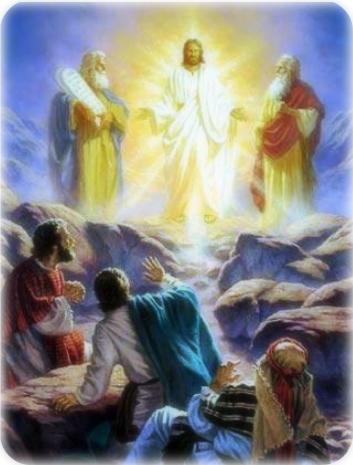 |
On that day the voice of God was heard to declare that Jesus is God's begotten Son, so it was clearly a day of interaction with God. Another day on which God's voice was heard to declare that Jesus is God's begotten Son was at His baptism. The date proposed in my work for that is Sat 6 Oct 29 which was also Atonement (PH) and Tabernacles (E). So again it was a holy day on the Enoch Calendar.
Another example in the life of Christ is the day of the Resurrection, which was Easter Sunday on the Enoch Calendar. That clearly was a day of interaction with the apostles of the now resurrected and perfect Lord.
A final example is the Day of Pentecost which occurred on Firstfruits (Pentecost) on the Enoch Calendar. That was a day of interaction with the Holy Ghost, the third member of the godhead. That seems to qualify.
All of these examples were holy days on the Enoch Calendar.
What about any examples during the restoration of the Lord's Church in the latter days?
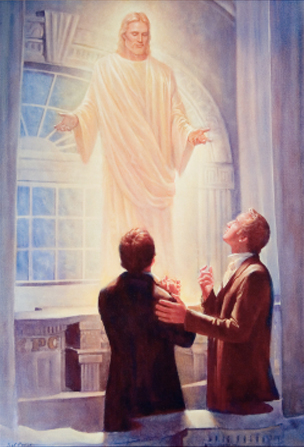 |
Other dates of interaction with holy angels are (1) the date of the delivery of the golden plates containing the record that would become the Book of Mormon by the angel occurred on the Autumn Equinox (0 Autumn) on the Enoch Calendar, (2) the day proposed in my work for the appearance of Peter, James and John was on Firstfruits (4 Late Spring) on the Enoch Calendar, (3) the day of the birth of the Church of Christ on Tue 6 Apr 1830 was on Consecration (10 Spring) on the Enoch Calendar, but not on a holy day of the Hebrew Calendar and (4) the day proposed in my work for the birth of the Kingdom of God on Sat 6 Apr 1833 was on Passover (14 Spring) on the Enoch Calendar.
One "covenant" date in the LDS Church might be considered to be the date of giving D&C 84 which contains the "oath and covenant of the priesthood" and was given to those whom the Lord called his "friends". It was given on the two days of Sat 22 Sep 1832 and Sun 23 Sep 1832. Those two days happened to be the days of the Autumn Equinox (0 Autumn) and Trumpets (1 Autumn) on the Enoch Calendar, so both of those major holy days fit the theory being tested!
Perhaps the best example of the Lord appearing after His church had been founded was His coming to the Kirtland temple on Sun 3 Apr 1836 (D&C 110:2). Articles have been written about the importance of that day being the Easter Sunday most like that of the Resurrection as far as the Hebrew Calendar is concerned. It was not even noticed until now that the day in 1836 was also Easter Sunday on the Enoch Calendar, even as it was at the resurrection of Jesus. Thus, the appearances of Jesus Christ to the LDS saints apparently follows the same pattern as anciently. These results are summarized in Table 2. Holy days shown in red are major holy days, the one in blue is a minor holy day.
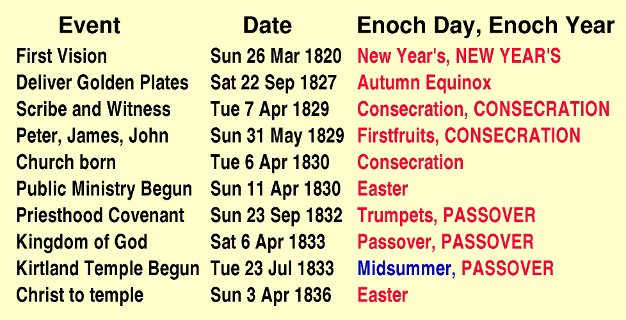 |
An investigation was done to (1) discover convenant dates, especially for Abraham, Isaac, and Jacob, meaning both marriage covenants and also covenants with the Lord, and (2) to discover any pattern of what sacred calendars were used. Dates were found for all of those events and in every case they fell on holy days on the Enoch Calendar. In the case of the marriages, they also fell in holy years on that calendar.
To verify that result, already published dates of the interactions of God with Moses, Jesus Christ and Joseph Smith were also reviewed in order to see if they fit the pattern of falling on Enoch holy days. Again in that case, all of those dates were holy days on the Enoch Calendar. Moreover, several dates involving only angels also fell on those holy days.
Thus, it appears that the Lord often uses the Enoch Calendar to schedule both appearances and covenants. It is to be expected that there are exceptions to this rule, but it indeed does appear that the Enoch Calendar is used for these purposes and that such events are indeed scheduled by the Savior!